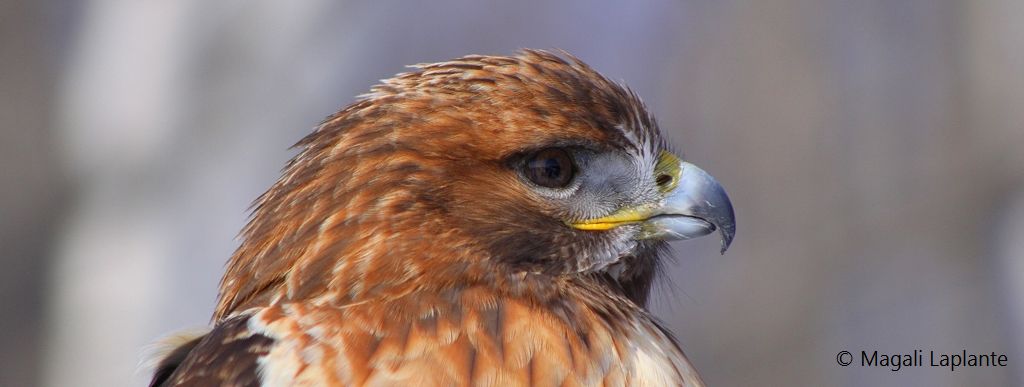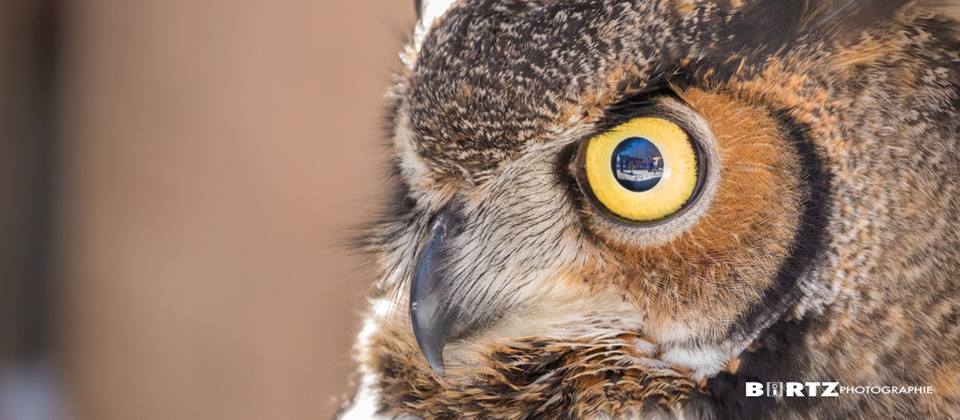What defines a bird of prey?
Most people believe that birds of prey differ from other bird species because they eat meat. However, other carnivorous bird species exist that are not considered to be birds of prey. For example, the great blue heron, just like the belted kingfisher, eats fish. Both these species are not considered to be birds of prey because they do not share the following characteristics:
The best way to determine if a bird is a bird of prey is to observe its feet. As opposed to birds that catch their food with their beak, birds of prey use their feet to catch and kill their prey. They therefore have very powerful toes, each one ending with a longue curved claw. These claws are called talons.

Birds of prey also have a very sharp hooked beak, which they use to rip meat apart when their prey is too big to be swallowed whole. They do not leave anything behind; they swallow every part of the carcass. What they cannot digest, the prey’s skeleton and fur for example, end up being regurgitated as regurgitation pellets. Finding these pellets at the foot of trees is a good hint that birds of prey might be present in the area. All birds of prey produce regurgitation pellets.

All birds have an excellent vision, which enables them to avoid obstacles while flying, but the eyesight of birds of prey is even more refined, and often binocular for them to better evaluate distances. It is estimated that a peregrine falcon can identify prey the size of a pigeon over a kilometer away.

Diurnal or nocturnal?
All birds of prey are classified in the following groups: Strigiformes, Falconiformes and Accipitriformes. All the owl species belong to the Strigiforme order, which, for the most part, are nocturnal, meaning they hunt at night. These birds are equipped with excellent night vision, with refined hearing, and with soft plumage allowing them to fly silently. All falcon species belong to the Falconiforme order. The Acciptriforme order regroups eagles, hawks, harriers and ospreys. All species belonging to the Falconiforme and Accipitriforme orders are exclusively diurnal, meaning they hunt only between when the sun rises and when it sets, even though their hunting habits vary from one species to the next.
Sentinels of the Sky
Like all living organisms, birds of prey occupy an important place in the environment and have an important part to play in the ecosystem’s balance. This importance is even bigger considering that they are apex predators, meaning that they are at the top of the food chain.
By eating smaller animals, they contribute to controlling their population size. Without them, prey species such as small mammals (mostly rodents), small birds, reptiles, amphibians and large insects might overpopulate an area, exceeding the amount of living beings that the area in question can handle. For example, if there is an overpopulation of lemmings (a small rodent that lives in northern Quebec), the lemmings could eat all the available plants, creating a famine affecting all other herbivores in the area. An overpopulation of rodents could also contribute to the propagation of certain diseases to the humans and animals that share their environment.








